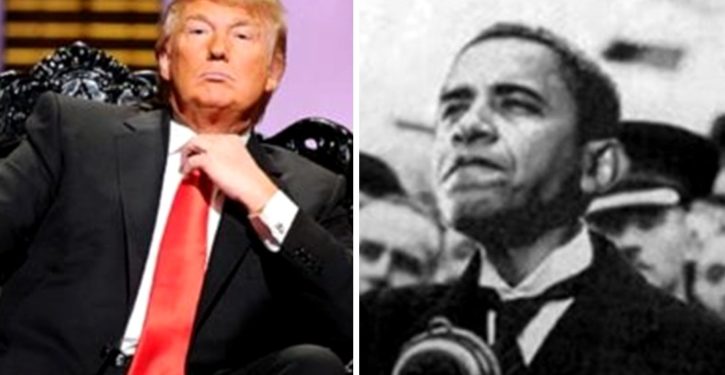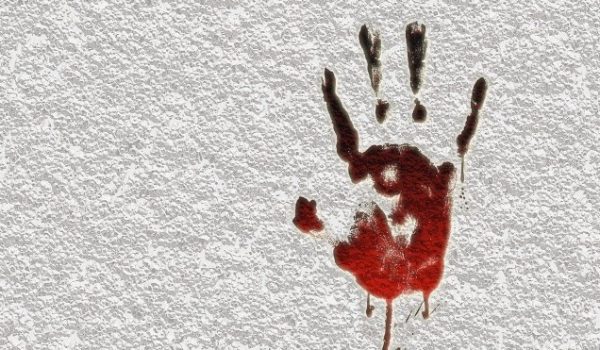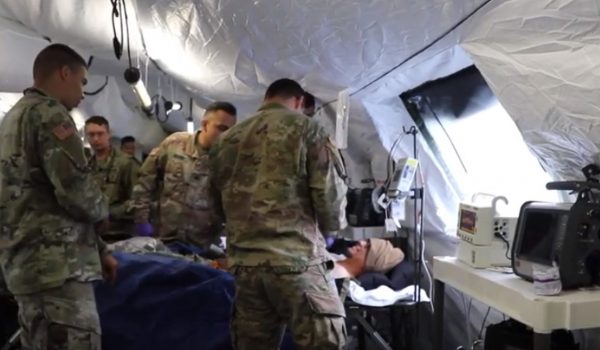
“Always expect the unexpected” and “Anything is possible” are my favorite clichés that, starting in January 2018, I have repeatedly applied to the 2020 presidential election. But now, both expressions are on steroids due to the catastrophic health and economic crisis caused by the COVID-19 pandemic.
The race for the Democratic nomination between two elder statemen (both in the highest-risk category for surviving the coronavirus) has ground to a screeching halt. With primaries postponed, the likely nominee, former Vice President Joe Biden, was last seen relegated to his basement. Biden’s campaign is frozen in time, 774 delegates short of securing the 1,991 he needs to be his party’s standard-bearer at the Democratic National Convention that may or may not happen as planned.
On the Republican side, the pandemic and forced economic shutdown have effectively trashed Trump’s long-standing re-election message. Whether or not one believes he was responsible for the “greatest, strongest” economy in U.S. history, a bigger issue now looms: How is Trump perceived to be managing the crisis?
Will this presidential election be the most important in American history?
Cue the infamous 2008 Rahm Emanuel quote: “You never want a serious crisis to go to waste” — shown here when the former Chicago mayor was President Obama’s White House chief of staff. These days I will wager that Emanuel’s words appear in bold letters on the cover of Trump’s newly revised campaign playbook.
And so far, supporters believe that Trump is not “wasting” the crisis while engaging in long, daily television briefings. Moreover, according to the RealClearPolitics polling average, public approval of President Trump’s handling of the coronavirus is 50%, a high-water mark for him, with 46.7% disapproving. Those percentages are no surprise to a veteran GOP strategist, who told me, “Even in a crisis, Trump’s actions will split by the usual partisan divide.” But he added, “200,000 deaths won’t look good.”
The federal government’s grim six-figure death estimate signals that our nation is careening toward a bottomless crisis. Intensifying the public health fear and suffering is panic about a potential repeat of the Great Depression. On March 30, a USA Today headline summed it up: “Unemployment could top 32% as 47M workers are laid off amid coronavirus: St. Louis Fed.”
The 32% jobless estimate from St. Louis Federal Reserve President James Bullard was up 2 percentage points from his projection of 30% last week.
USA Today’s report continued with a historical reminder: “That would be the highest jobless rate on records dating to 1948 and easily top the 25% rate during the Great Depression.”
‘Nothing else Trump has done matters’
“Always expect the unexpected” practically defines what this crisis means for the president’s re-election strategy: Team Trump must wage its campaign as if the last three years of his presidency did not exist. Another veteran GOP presidential strategist told me earlier this week, “Nothing else Trump has done matters.”
Similar to other U.S. presidents at the initial stages of a crisis, Trump has not only received good marks (50% approval) for his handling of the pandemic, but his overall job approval ratings have also increased.
At this writing, according to the RealClearPolitics poll average, 47.7% approve of the job Trump is doing — his record high since taking office — with 50.3% disapproving. Looking back, on Jan. 27, 2017, his RCP job approval average was 44.3%, with a 44.2% disapproval.
So how do those ratings compare to those of Presidents Bush and Obama at the onset of the crises that plagued their first terms?
On Sept. 18, 2001, a week after the United States experienced its most devastating attack on the continental homeland, Bush’s RCP job approval rating average was 81%. On Oct.18, 2001, it peaked at a stratospheric 88%.
President Obama never saw those kinds of numbers, but his approval ratings did benefit from his perceived handling of the crash of 2008. Five months after the onset of that financial crisis, he took office with a 63.3% job approval rating on Jan. 27, 2009. Obama’s approval peaked at 65.6% on Feb. 16, 2009.
Historically, a president’s approval rating in a crisis starts high (the “rally around the flag” effect) and then inevitably drifts downward.
For Trump, that could signal potential danger. The fact that a newly minted “wartime president” gained a bump of only 3 percentage points – from 44.3% when he took office to 47.6% today – does not bode well for his re-election prospects.
Also note that Bush, the last GOP president to win re-election, had an approval rating over 50% near Election Day, a mark Trump has never achieved. More concerning for Republicans is that the president should now be experiencing peak approval benefit from the early “rally around the flag” effect.
Furthermore, one can argue, as I did on March 13, that the current crisis is fundamentally more consequential and damaging than the September 11, 2001 attacks and 2008 financial crisis combined. Although both were harrowing, and the economy sustained a gut punch each time, unlike today, the entire economy was still functioning. And, except in the areas directly attacked on 9/11, everyone resumed their daily lives.
Both Bush and Obama saw their ratings come down as their crises abated. A month before Bush won his 2004 re-election bid, his RCP job approval rating was back to earth at 52.8%, with 45% disapproval.
Obama’s RCP job approval average was 42.3%, with 51.8% disapproving, in October 2011, a year before winning re-election, though he regained a net positive approval rating over the coming 12 months, hitting 49.7% approval to 47.7% disapproval by early October 2012 — one month before voters went to the polls.
Dual health and economic blows
Can Republicans take comfort in Obama’s low pre-Election Day approval rating as a hopeful sign for Trump? Perhaps, but this is potentially misleading for two reasons. First, by the 2012 election, the 2007-09 Great Recession was officially over. Although growth was still slow, the economy was rebounding with unemployment in October 2012 down to 7.8%, from its 10% high three years earlier.
Second, and of paramount importance, is that the current dual health and financial crisis, with its “temporary” (but length unknown) forced shutdown, threatens every major industry and sector of our society, with no historic equal. Sure, the government is going to be printing trillions of dollars and throwing bundles out of proverbial airplanes. Yet, where the money lands, who actually receives it and who really benefits — along with untold reports of fraud, waste, and abuse — will most likely morph into an enormous and consequential campaign issue.
In April and beyond, Trump has a historic opportunity to exhibit leadership on a scale equal to Franklin D. Roosevelt. And how he is perceived to be managing that task is likely all that will matter in November if he leads us away from what could be a 1930s-style “Greater” Depression.
Finally, in 1932, then-New York Gov. Roosevelt was elected president in a landslide after defeating Republican Herbert Hoover (who many believe was unfairly blamed for the Depression).
That raises the question: While Biden is in his basement, how will current New York Gov. Andrew Cuomo (a “rising star” currently adored by the media) factor into the 2020 election?
Sorry, I have to say it: “Always expect the unexpected” and “Anything is possible.”
Cross posted at RealClear Politics




